#national otter day
Explore tagged Tumblr posts
Text
Pulled off the highway when I saw something in this pond; imagine my delight at finding four river otters! On national otter day no less! I love this planet
494 notes
·
View notes
Text
yes you do

This is Dorius.
Hey you guys
so it’s national Otter day so I drew an otter you you wanna see him?
6 notes
·
View notes
Text
For #WorldOtterDay :

Christian Morrisseau (Anishinaabe, 1969-2022)
Otter Family, 2005
acrylic on canvas, 93.5 x 121.9 cm (36.79 ins x 48 in)
#animals in art#animal holiday#contemporary art#Indigenous art#First Nations art#Native American art#Christian Morrisseau#Anishinaabe#painting#Woodlands School#World Otter Day#otter#river otter
24 notes
·
View notes
Text
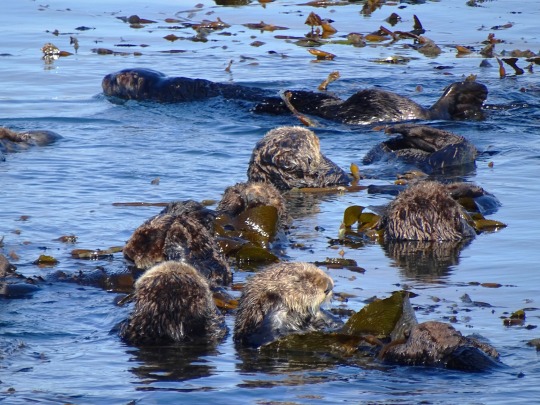
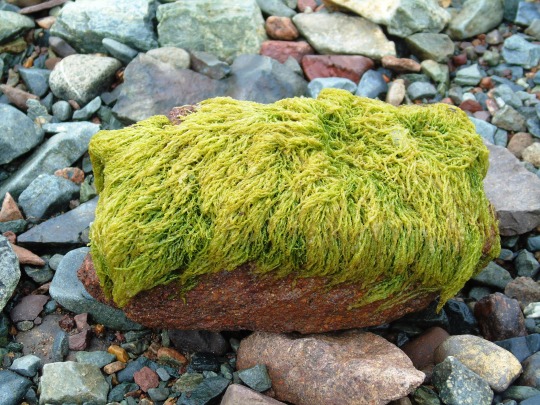
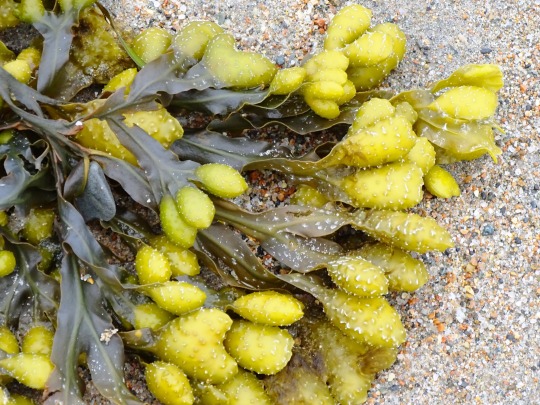
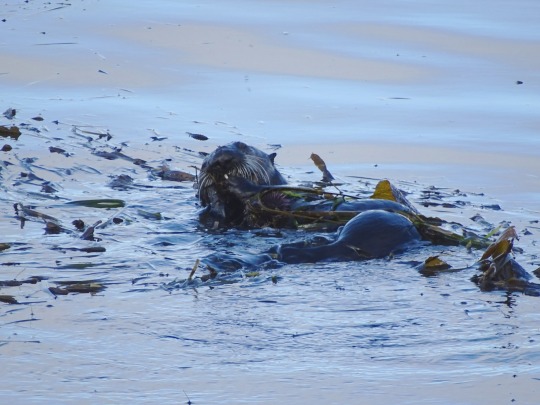
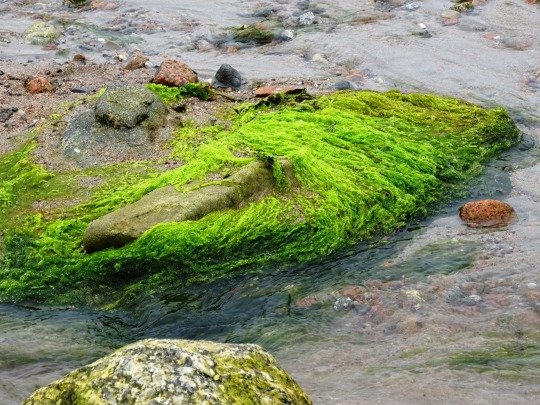
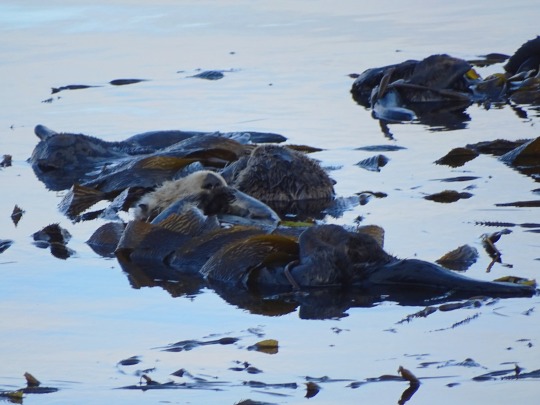
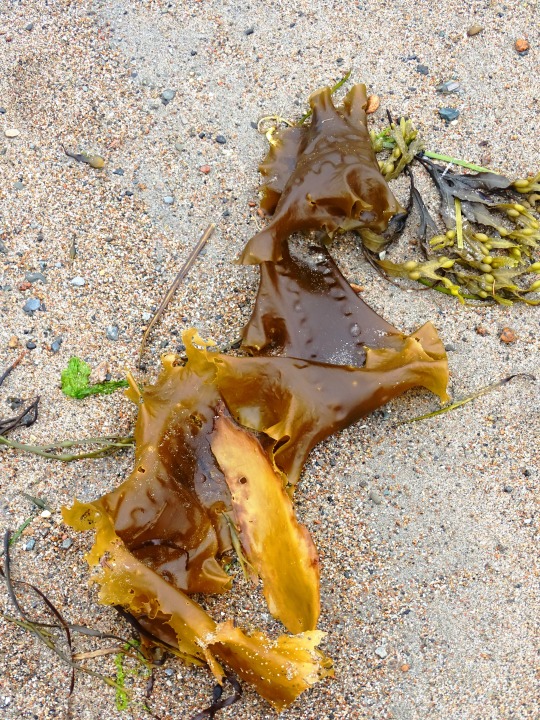
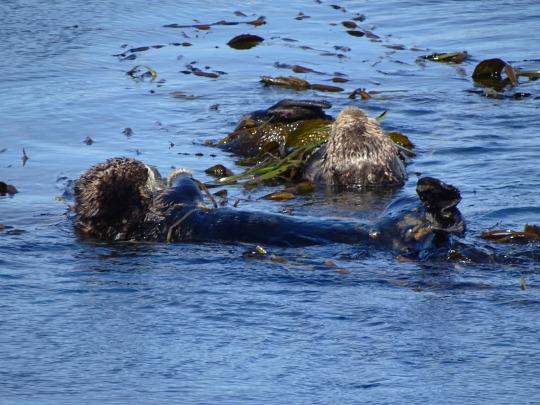
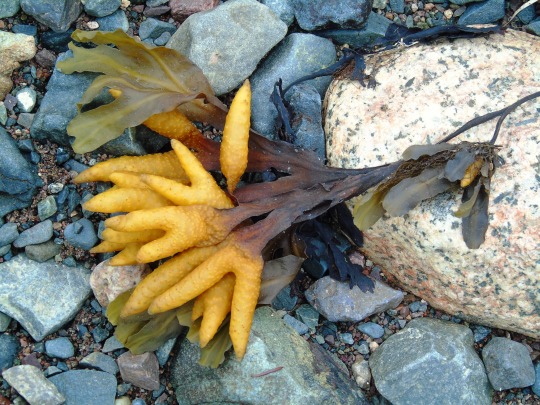
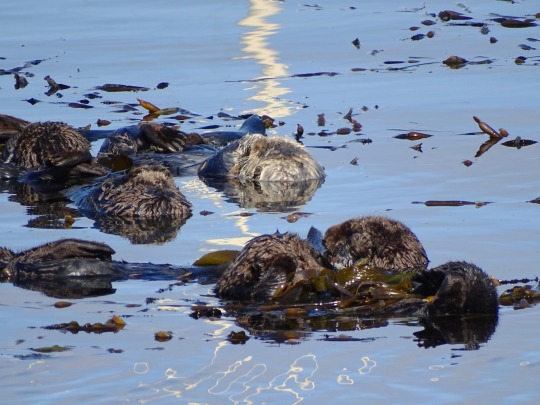
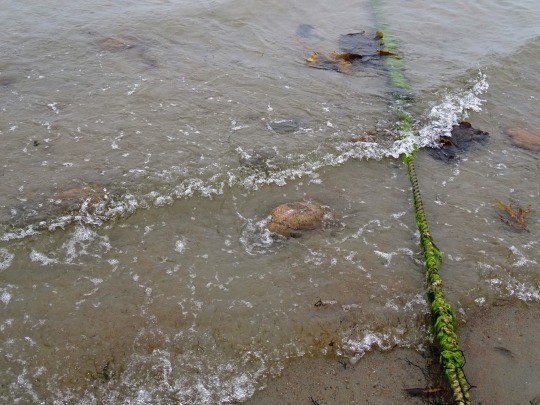
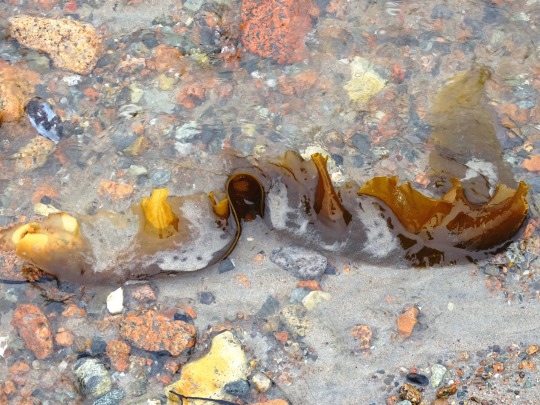
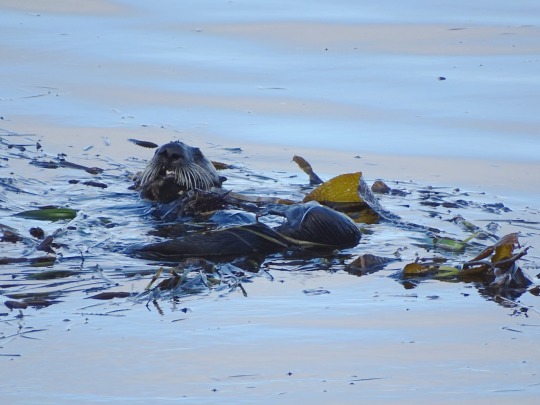
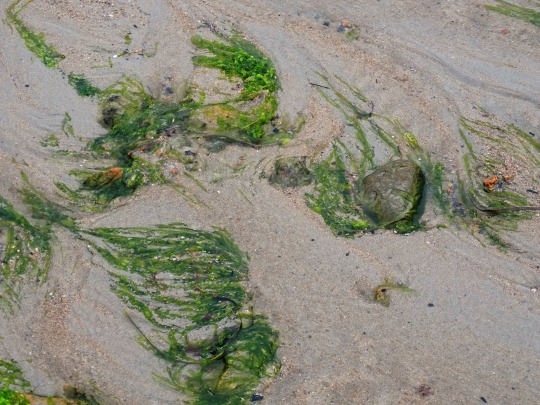
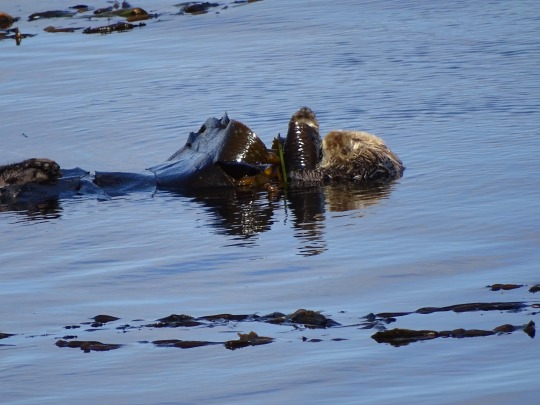
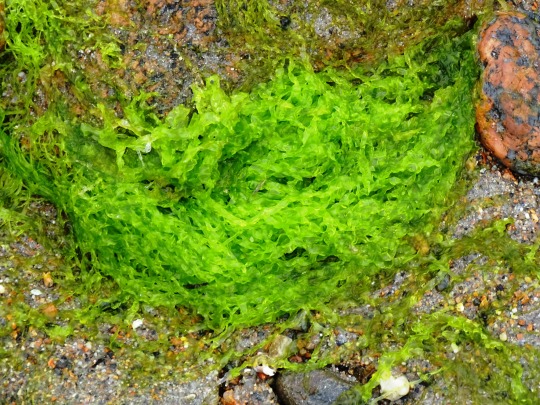
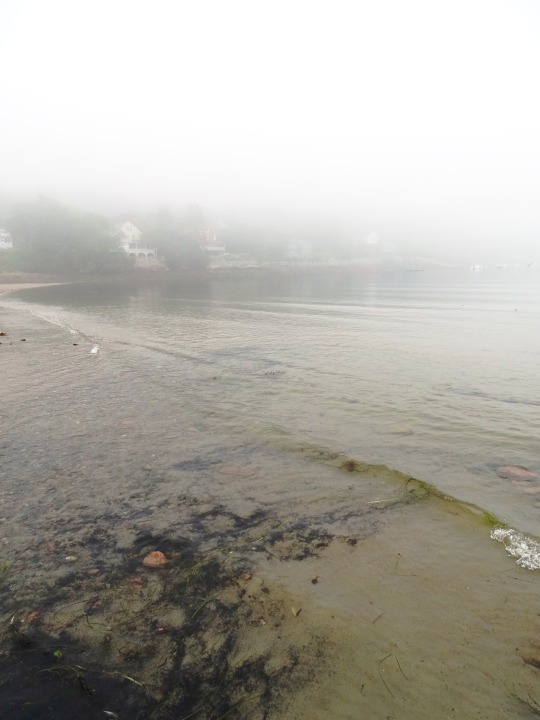
World Seagrass Day
World Seagrass Day is celebrated annually on March 1 to raise awareness about seagrass and its important functions in the marine ecosystem. It was declared by the United Nations General Assembly on May 22, 2022, following a resolution passed by Sri Lanka to emphasize the conservation of seagrass in marine environments. Seagrass is a flowering marine plant present along coastlines worldwide, acting as a crucial source of food for marine life and helping stabilize water quality.
History of World Seagrass Day
Seagrass serves an important role in maintaining the marine ecosystem. Except for Antarctica, various types of seagrass are found on coastlines around the world. From the common eelgrass, shoal grass, star grass, and the like, seagrass provides an important source of food for marine life. It also supplies crucial environmental, social, and economic benefits.
Seagrass evolved around 100 million years ago when most plant life was still found underwater. Over the course of its evolution, it has adapted to living and reproducing in various marine environments, bending and swaying with currents and dispersing its pollen through the water.
Fish, turtles, manatees, plankton, and even sharks get their sustenance from seagrass, among other things. Seagrass also acts as nursery habitats for commercially harvested fish and helps improve the water quality of the environment it inhabits. There are currently 72 recorded types of seagrass in the world, covering an area of around 300,000 square kilometers in 159 countries.
Seagrass sediments contain between 4,200 and 8,400 Tg of organic carbon, which is nearly twice the amount of carbon per area compared with land soil. With the advent and ongoing process of climate change, seagrass’ role as a carbon deposit is much more crucial today, to help sustain sea life and its ecosystem. For one, it stores up to 18% of the world’s oceanic carbon, which is greater than the percentage stored by rainforests. This function makes it a key influence in battling the effects of climate change.
As with most marine resources, seagrass is currently under threat by human activity. A United Nations report stated that up to 7% of seagrass marine habitats are being wiped out worldwide every year; this is equivalent to a football field of seagrass lost every 30 minutes.
This emergency compelled the United Nations, following a resolution by Sri Lanka, to declare a formal World Seagrass Day, to raise awareness on preserving and conserving seagrass around the world. The commemoration was formally announced in 2022.
World Seagrass Day timeline
100 Million Years Ago Seagrass’ Evolution Begins
Seagrass begins to evolve from terrestrial plants.
1930s A Disease Ravages
Up to 90% of all eelgrass in temperate North America is wiped out after succumbing to a mold-like disease, causing the extinction of a type of sea snail.
2014 Restoration Efforts Succeed
Around 7.65 million seagrass seeds are planted along the coast of Virginia, U.S., resulting in the growth of up to 6,195 acres in one of the most successful seagrass restoration efforts.
2022 World Seagrass Day is Initiated
The United Nations declares March 1 as World Seagrass Day.
World Seagrass Day FAQs
Where is the largest seagrass plant in the world?
The world’s largest seagrass plant — which is the size of 28,000 football fields — is located in Western Australia.
What is the difference between seagrass and seaweed?
The main difference is that seagrass has roots, stems, and leaves, while seaweed does not. Seagrass is considered a vascular plant, while seaweed is more of a collection of multicellular algae.
What are the most common human uses of seagrass?
Humans use seagrass to fertilize fields, insulate houses, thatch roofs, weave and hold furniture together, fill mattresses and car seats, e.t.c. Additionally, seagrass supports the commercial fishery industry while also helping absorb carbon dioxide from the atmosphere.
How to Observe World Seagrass Day
Read about seagrass
Support seagrass charities
Visit the shore
What better way to learn about seagrass, its role, and its plight than to read a material written by the experts? Read articles, books, and reports by marine scientists, conservation foundations, and similar institutions to broaden your knowledge of seagrass.
Support and/or donate to seagrass conservation efforts worldwide. These include such organizations as Project Seagrass and The Ocean Foundation’s SeaGrass Grow program. Your support makes all the difference.
Travel to the coast and bask in the seagrass-covered waters. Hang out at the beach, swim in the ocean, and see what kinds of seagrass are there. After all, seagrass helps make the view picturesque and natural.
5 Important Facts About Seagrass
Millions depend on seagrass underwater
An effective carbon absorber
The sun gives life to all
The efficacy of seagrass
An emergency situation
Seagrass provides a habitat and food for almost 70% of all sea life, from manatees and sea turtles to shellfish and plankton.
Seagrass is able to absorb carbon up to 35x faster than the Amazon Rainforest.
Like all grassy plants, seagrass needs an ample amount of sunlight to survive, thus making it most visible in sunnier climates and greater depths.
A football field’s worth of seagrass is able to absorb 7,500 miles worth of automobile pollutants and treat sewage from 780 people.
At least 35% of seagrass worldwide has been lost or degraded in the past 40 years, further accentuating the need for conservation.
Why World Seagrass Day is Important
Seagrass keeps the world running
Seagrass is reliable
It spares us the thought of environmental dysfunction
Seagrass plays an important role in maintaining both marine and human ecosystems. Its function as a carbon sink helps absorb carbon particles from the surface and from the sea, which helps improve the quality of the water and lives of those who live around it.
Aside from its environmental benefits, seagrass also contributes to the economy. Businesses that rely on seagrass for their work benefit from its abundance and quality. Fish that are caught in seagrass-rich environments tend to be healthier.
Without seagrass, what would our seas look like? They would be desolate, for sure, which would affect every living thing on the planet.
Source
#kelp#sea otter#Morro Bay#Pacific Ocean#landscape#wildlife#animal#original photography#beach#nature#summer 2022#California#Pelvetia canaliculata#Canada#Newfoundland#Acadia National Park#original photogrpahy#World Seagrass Day#WorldSeagrassDay#1 March#flora#USA#Maine#Atlantic Ocean#travel#vacation#tourist attraction#landmark
8 notes
·
View notes
Text

oilers scored
#dallas stars.#stars lb#i called it. dude#ITS NATIONAL OTTER DAY TOO ON THE 29TH. PLEASE STARS PLEASE
4 notes
·
View notes
Text
05/31/2023 is World Otter Day 🌏, National Macaroon Day 🇺🇲, National Save Your Hearing Day 👂🇺🇲, National Speak in Sentences Day 🇺🇲, National Senior Health and Fitness Day 🇺🇲, National Flip Flop Day 🇺🇲, World No Tobacco Day 🚭🇺🇳
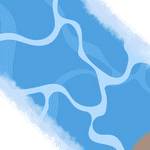
#world otter day#national macaroon day#national save your hearing day#national speak in sentences day#national senior health and fitness day#national flip flop day#world no tobacco day
1 note
·
View note
Text




Today is 29th of May.
Today is World Otter Day, National Snail Day, National Paperclip Day, National Flip Flop Day.
1 note
·
View note
Text
"Many people know about the Yellowstone wolf miracle. After wolves were reintroduced to the national park in the mid-1990s, streamside bushes that had been grazed to stubble by out-of-control elk populations started bouncing back. Streambank erosion decreased. Creatures such as songbirds that favor greenery along creeks returned. Nearby aspens flourished.
While there is debate about how much of this stemmed from the wolves shrinking the elk population and how much was a subtle shift in elk behavior, the overall change was dramatic. People were captivated by the idea that a single charismatic predator’s return could ripple through an entire ecosystem. The result was trumpeted in publications such as National Geographic.
But have you heard about the sea otters and the salt marshes? Probably not.
It turns out these sleek coastal mammals, hunted nearly to extinction for their plush pelts, can play a wolf-like role in rapidly disappearing salt marshes, according to new research. The findings highlight the transformative power of a top predator, and the potential ecosystem benefits from their return.
“It begs the question: In how many other ecosystems worldwide could the reintroduction of a former top predator yield similar benefits?” said Brian Silliman, a Duke University ecologist involved in the research.
The work focused on Elk Slough, a tidal estuary at the edge of California’s Monterey Bay. The salt marsh lining the slough’s banks has been shrinking for decades. Between 1956 and 2003, the area lost 50% of its salt marshes.
Such tidal marshes are critical to keeping shorelines from eroding into the sea, and they are in decline around the world. The damage is often blamed on a combination of human’s altering coastal water flows, rising seas and nutrient pollution that weakens the roots of marsh plants.
But in Elk Slough, a return of sea otters hinted that their earlier disappearance might have been a factor as well. As many as 300,000 sea otters once swam in the coastal waters of western North America, from Baja California north to the Aleutian Islands. But a fur trade begun by Europeans in the 1700s nearly wiped out the animals, reducing their numbers to just a few thousand by the early 1900s. Southern sea otters, which lived on the California coast, were thought to be extinct until a handful were found in the early 1900s.
In the late 1900s, conservation organizations and government agencies embarked on an effort to revive the southern sea otters, which remain protected under the Endangered Species Act. In Monterey Bay, the Monterey Bay Aquarium selected Elk Slough as a prime place to release orphaned young sea otters taken in by the aquarium.
As the otter numbers grew, the dynamics within the salt marsh changed. Between 2008 and 2018, erosion of tidal creeks in the estuary fell by around 70% as otter numbers recovered from just 11 animals to nearly 120 following a population crash tied to an intense El Niño climate cycle.
While suggestive, those results are hardly bulletproof evidence of a link between otters and erosion. Nor does it explain how that might work.
To get a more detailed picture, the researchers visited 5 small tidal creeks feeding into the main slough. At each one, they enclosed some of the marsh with fencing to keep out otters, while other spots were left open. Over three years, they monitored the diverging fates of the different patches.
The results showed that otter presence made a dramatic difference in the condition of the marsh. They also helped illuminate why this was happening. It comes down to the otters’ appetite for small burrowing crabs that live in the marsh.
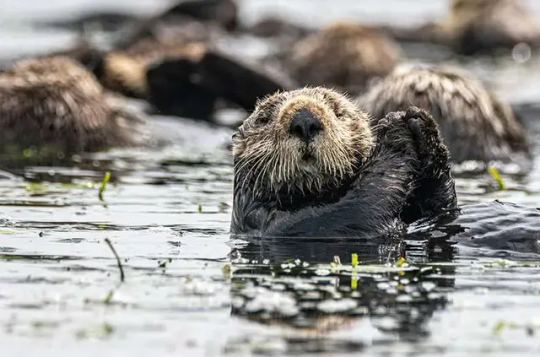
Adult otters need to eat around 25% of their body weight every day to endure the cold Pacific Ocean waters, the equivalent of 20 to 25 pounds. And crabs are one of their favorite meals. After three years, crab densities were 68% higher in fenced areas beyond the reach of otters. The number of crab burrows was also higher. At the same time, marsh grasses inside the fences fared worse, with 48% less mass of leaves and stems and 15% less root mass, a critical feature for capturing sediment that could otherwise wash away, the scientists reported in late January in Nature.
The results point to the crabs as a culprit in the decline of the marshes, as they excavate their holes and feed on the plant roots. It also shows the returning otters’ potential as a marsh savior, even in the face of rising sea levels and continued pollution. In tidal creeks with high numbers of otters, creek erosion was just 5 centimeters per year, 69% lower than in creeks with fewer otters and a far cry from earlier erosion of as much as 30 centimeters per year.
“The return of the sea otters didn’t reverse the losses, but it did slow them to a point that these systems could restabilize despite all the other pressures they are subject to,” said Brent Hughes, a biology professor at Sonoma State University and former postdoctoral researcher in Silliman’s Duke lab.
The findings raise the question of whether other coastal ecosystems might benefit from a return of top predators. The scientists note that a number of these places were once filled with such toothy creatures as bears, crocodiles, sharks, wolves, lions and dolphins. Sea otters are still largely absent along much of the West Coast.
As people wrestle to hold back the seas and revive their ailing coasts, a predator revival could offer relatively cheap and effective assistance. “It would cost millions of dollars for humans to rebuild these creek banks and restore these marshes,” Silliman said of Elk Slough. “The sea otters are stabilizing them for free in exchange for an all-you-can-eat crab feast.”"
-via Anthropocene Magazine, February 7, 2024
#otters#sea otters#conservation#erosion#coastal erosion#coastline#marshes#saltwater#marine science#marine biology#marine animals#sea creatures#ocean#sustainability#soil erosion#erosion control#crab#good news#hope
3K notes
·
View notes
Text
It’s National Shrimp Day! 🦐
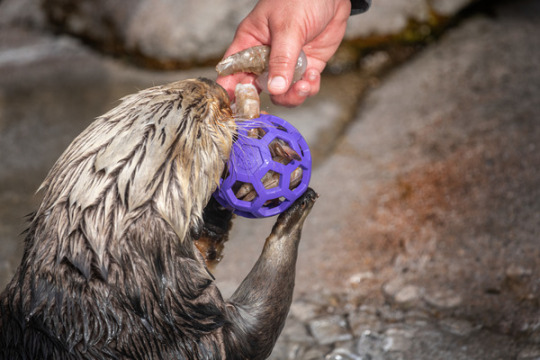
Our otters, just like the loveable Rosa here, are huge fans of snacking on sustainable shrimp. These mighty mustelids can chow down on up to two lbs of shrimp a day—every bite coming from fisheries or farms that prioritize sustainability.
If you also choose to eat shrimp, it's pawsitively impawtant to ask if the shrimp you’re buying is sustainable.
Fortunately, much of the shrimp farmed in the U.S. gets a thumbs-up for sustainability. But for a deeper dive into sustainable shrimp, check out Seafood Watch’s shrimp guide.
1K notes
·
View notes
Text
Platonic Yandere Neuvillette Alphabet
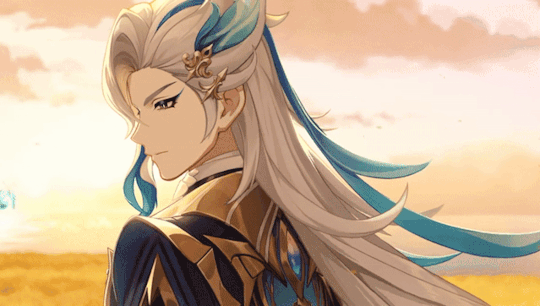
Happy Birthday, Hydro Dragon.
(with Child!/Teen! GN! Reader. Second Person P.O.V.)
It's my first attempt in making an alphabet (both writing and making one from the scratch)
______
A - Adopt (How long will it take for them to start planning "to adopt"?)
It's hard to pinpoint the exact moment. Neuvillette's affection resembles a river flow. It's starts, it flows and, eventually, it will reach the sea. There won't be a specific event, or day. He will meet you, he will know you better and, one day, will just spontaneously come to the conclusion that he wants to adopt you.
B - Baby (Is age of their "adoptee" important to them? Will they reconsider "adoption" because of the age?)
Not really. Neuvillette will be equally happy with Baby, Child and Teen. If needed, melusines will help him keep an eye on you. Besides, who would dare to say something to Iudex of Fontaine, who is having his adorable baby in a sling during trials?
C - Cage (How free their "adoptee" will be?)
Neuvillette will take you anywhere you want, as long as he is near you. You can go anywhere you want as long as you have at least three melusines following you. But, you can visit any room in his house, Neuvillette won't mind at all.
D - Domestic (Beside the room, what did they do in their in the house for their "adoptee"?)
Neuvillette made a pound for Leisurely Otters near his house, so you can have some company when he and melusines are busy.
E - Enthusiasm (How enthusiastic they are about the whole "adoption" ordeal?)
Very. The moment he decides to adopt you, Neuvillette wants to do it as soon as possible. He will immediately start decorating a room for you, buy toys and clothes.
F - Family (Will they insist on being called father/mother/brother/sister etc.?)
Neuvillette wants to be called father. He won't outright make you calk him 'father', but he will constantly call himself your father every time he talks to anyone. He is waiting, when one day you will give up and call him 'dad'.
G - Guilty (Do they feel guilty for taking their "adoptee" from their previous life?)
No. Not really. Neuvillette firmly believes, that what he did was right, even if your biological family were good people.
H - How (How exactly the "adoption process" will go?)
Neuvillette will try to find your biological relatives, with help from melusines, plant the evidence and then anonymously tip the nation law enforcement. All of it to make sure, that he is the only one, who can adopt you.
I - Ill (What will they do, if their "adoptee" became sick, and they can't treat them on their own?)
Neuvillette is prepared for that. He has Sigewinne who will help with taking care of you.
But, if there is something serious, so serious, that you need to spend some days in the infirmary of Fortress of Meropide, and, if your relatives are here, Neuvillette will consider forcing Wriothesley into keeping them in Production Zone 24/7. Neuvillette will ask melusines to get your relatives in trouble, forcing Wriothesley into locking them as a punishment.
J - Joke (What kind of parent they are? Serious or Fun?)
Serious, but not against the idea of playing games with you.
K - Kill (Will they kill for their "adoptee"?) + Bonus Round [Kind] (Are they kind towards their "adoptee"? Kind in a universal way, not be n their own eyes?)
Not for "adoption". Neuvillette doesn't want to traumatize you. He wants you to be happy and see him as a kind father. He is kind towards you, and, if people knew about his interactions with you (exept the reasons for jailed relatives), they will also call him a good father, if only slightly controlling.
But, if someone dare to hurt you after you were "adopted"... Let's just say, Neuvillette is a dragon, and dragons aren't to be messed up with.
L - Liquid (Do they have any special drink they make for their "adoptee"?)
Water with sweet syrups.
M - Meal (And what about meals?)
Neuvillette will try to make your favorite food. Even if you prefer deep-fried food.
N - No (What they will never do to their "adoptee"?)
Neuvillette will never ever hurt you or make you cry. He is extremely patient, and won't raise his voice while speaking with you.
O - Obvious (Is it possible to catch on their intention to "adopt"?)
It's almost impossible. For that one need to observe Neuvillette, melusines and even vishaps.
P - Place (Favorite place to took their "adoptee")
Merusea Village. Neuvillette will be happy, if he sees you making friends with melusines.
Erinnyes Forest. Neuvillette also likes to take you here to play with vishaps. You can do whatever you want with vishaps. One glare from Neuvillette will cut all growls short.
Q - Quit (Is there anything, that will make them reconsider to "adopt"?)
There is a slim chance. If you have a perfect relationship with your relatives, he will consider to give up. However, the moment he sees even the smallest frown on your face, the "adoption" will start again.
R - [Character Specific Letter] Rain (Will Neuvillette took their "adoptee" for a walk during rains?)
It's one of the things, that Neuvillette will insist on doing with you. Of course, he won't go out with you during storms or very cold rain, but he wants to soak up with you under the rain as often as he can.
S - Sharing (Do they "adopt" because they wanted to give love to someone, or they want someone to give love to them?)
To give. His reason for "adoption" were for protecting you and giving you parental love you deserve.
T - Thing (What is the first thing they get for their "adoptee"?)
Before "adoption" was concluded - warm blanket for your new room.
As an "adoption" present - any toy of your liking.
U - Unite (Will they welcome someone into the "family"?)
Melusines, of course. And, if you have younger siblings, they are also welcomed into the family.
Neuvillette isn't sure about Wriothesley, Clorinde and Furina, so he keeps them away.
V - Vacation (Will they take their "adoptee" on vacation?)
Depends. If you are from Fontaine, he will easily take you on vacation to other nations.
But, if you aren't from Fontaine, Neuvillette will never visit your home nation with you. And, if he has to take a business trip there, you will stay in Merusea Village until he returns.
W - Wish (How much they will do for their "adoptee"?)
Neuvillette won't spoil you too much, but he will be happy to provide you with anything you might want. As long as your requests are reasonable.
X - [Wildcard. Anything you want to share about them?]
Neuvillette will proudly display all drawings you made for him, even the childish ones, on his desk in Palais Mermonia.
After Neuvillette gained his authority, he got an ability to turn into dragon during rain. He likes to curl around you during his transformation.
Y - You (What make them want to choose their"adoptee" specifically?)
Because you are you. And because Neuvillette view your situation as an unfair towards you.
Z - Zero [Back to the beginning. Can you tell, during their first meeting with an "adoptee", that they will choose them?]
No, if you can't read minds. Neuvillette won't immediately focus on you, but he must find something interesting in you. Something, that will make him wants to know you better.
#platonic yandere#child reader#genshin impact#gender neutral reader#neuvillette x reader#platonic neuvillette#Platonic Yandere Alphabet#teen reader
156 notes
·
View notes
Note
Midas, i'm FREE!
Work has been EXHAUSTING since the last time we chatted on tumblr, but i think your request box is open, and i'm feeling a request of cuddling otters of fontaine with platonc/sisterly bond with Siegewinne!
OTTERS! I fucking LOVE those little guys they look so fluffy!
And Siegewinne is so adorable and has Wrio for a -cough Father/boss cough- so Yeah.
-🥘Stew
a wondrous earth
note: i definitely did not realize that you didn't mention sagau at midnight so. just pretend okay shhh
word count: 2k
-> warnings: nothing explicit but does take place post-fontaine AQ and kinda assumes you know the lore.. containes a few wink/nudge references at most.
-> gn reader (you/yours)
taglist: @samarill || @sarienic || @valeriele3 || @shizunxie || @boba-is-a-soup || @yuus3n || @esthelily || @turningfrogsgay || @cupandtea24 || @genshin-impacts-me || @chaoticfivesworld || @raaawwwr || @ryuryuryuyurboat || @undrxtxd || @rainswept || @wanderersqt || @rozz-eokkk
< masterlist >

teyvat was beautiful. even through a screen, you could lose yourself wandering for hours, taking in the flowing rivers, delicate flowers, the way the clouds swept over the sky like they themselves were savoring the view. wildlife scattered the paths, butterflies in the air and birds chirping from every tree. sometimes you turned off the music and dialogue just to sit and bask in it.
it was no different now that you actually were in teyvat. if anything, the heightened detail only deepened your love for the sights. you could watch every feather shift, not limited by graphics and models, feeling the spray of saltwater across your skin. perhaps it was simply because fontaine was where you’d first awoken, but it would always hold a soft spot in your heart.
the city itself was stunning, with pristine white buildings that shined with even the slightest sun, the meka moving with fluid gears that barely whirred as they passed. coins littered the bottom of every fountain, the smell shifting from perfume to fried food to fresh fruit, tempting from their stall. you could have spent the entire day roaming its streets and only barely brush the surface of everything to see inside. flora, fauna, people and meka and melusines and you, the streets just populated enough to be welcoming without crossing into overwhelming.
it could be argued that its beauty was due to being the centerpiece of the nation. perhaps outside of its mother of pearl walls were ruined homes and muddied streets that would surely dim your favor, and perhaps that was why neuvillette was so gun-shy about recommending it to you. though he was very professional about it, you’d played enough of the archon quest to know that his insistence on tending to you personally was more out of worry than any sort of actual need. your years of amassed mora had found its way cleanly into your pocket upon arrival, and that combined with your knowledge of fontaine would certainly be enough on its own to find you a nice, cozy life, even without the whole “god of all” thing.
that seemed a bit too intimidating anyway. no, you were more interested in watching romaritime flowers bloom in the rain, and whatever other duties came of your title could wait. celestia had yet to come knocking and most of the higher officials seemed allergic to even thinking of suggesting something else to do, so your time was your own.
(while it was a bit funny, their want to help seemed to push the line of fervency. it was worrying, and another reason to spend some time out wandering on your own. they’d been through enough, and the last thing you wanted was to be another weight on furina’s shoulders.)
thankfully, fontaine was vast, and held no shortage of sight to see. with a bit of persuasion—read: barely hinting at it once while navia happened to be in the room—you were equipped with a travel bag and set off on your own, heading north. unfortunately, there was no way to cross to the other islands without taking the aquabus, and you did want to see the institute and the opera house for yourself.
fortunately, fontaine’s waters were fresh.. or, at least fresh enough that one could swim in it without a mask… or oxygen tank…
you’d figure it out. there was not a single chance that you wouldn’t at least try. even if you didn’t have whatever blessing that allowed the traveller and others to dive freely, the elements seemed to like you well enough, and who would pass up on the chance to see fontaine’s waters for themself anyway?
not you, certainly. you crouched in the shallows and cupped the waves in your hands, bringing it to your mouth and taking a cautious breath.
it felt, expectedly, perfectly fine. normal, even. you let the water fall, but didn’t exhale anything else but air. there was no pressure in your lungs, no burning need to cough, just an odd warmth that spread from your throat downwards. you didn’t know why—you’d somewhat assumed that vision wielders had some sort of internal “gills” that pushed out excess water—but shrugged it off, double-checking that your bag was safely stashed within a bush before wading deeper. the water was a bit cool, but not cold, welcoming you in like a freshly-made bed after a long day.
unsurprisingly, fontaine’s great lake was just as beautiful as the city. in the shallows alone, romaritime flowers gleamed, reflecting the light they absorbed from the sun over and over within their thin petals. fish in rainbows of colors flocked among the depths, rays of light reaching down and inviting you to follow.
the fish were mostly apathetic to your presence. they neither fled nor turned, just allowing you by as if you were one of them. the few meka were a bit more curious, coming up and bumping your hand to ask why you had descended with them. with a bit of coaxing, you let one of the smaller ones allow you to hold onto its fins, pulling you deeper still. crabs scuttled along the floor, stingrays following the dappled rays of light. even this far down, you could still see easily, watching algae sway and jellyfish bloom without error.
at some point, your meka stalled, lingering in space and turning around. its searchlight flicked over you and the sand, inching back the way you came. was this the edge of its patrol route? you waved it goodbye and it waited a moment more before finally moving away, slowly at first before returning to speed. there were probably others you could take back anyway… provided you remembered where you were anyway.
…that was a problem for later. you turned and swam, following the valley. it was getting a bit shallower, and the sun was beginning to dim, but your curiosity was not yet satisfied. you pushed, and continued. a deeper valley of the ocean came into view, a deep bowl marked by large columns of bare rock on the far side. there were more jellyfish around here, and a few stingrays with shining blue skin. you swam to some, curious, but as soon as you got close it turned and met you more than halfway, circling twice like a cat who’s owner had finally come home. you pet over its wings, the transparent blue layer making your fingers buzz. the ray pushed into your hand, and when it left for another cheerful circle, your palm was blue. despite the fact that you hadn’t felt tired or in any way abnormal since diving, the sight of the film over your hands settled confidence over your mind. whatever came, you’d be able to handle it.
why? you had no idea. was there really a way for you to to absorb xenochromatic abilities? was this even that anyway? who cared, really, if you weren’t hurt?
you pet the stingray again with your afflicted hand—not wanting to stain both, in case it was somehow something harmful��and look around the valley, soaking in the view. the sunlight had turned slightly amber, but it never hindered the sea’s beauty. pink and blue jellyfish, octopi shooting pearls of water back and forth. how, you had no idea, but you weren’t going to ask. not that they’d be able to answer, anyway.
tired out, the stingray settled by your side, tail loosely flicking to keep in place as the water shifted. despite the fact that it had definitely touched your skin elsewhere, only your hand remained blue. that cemented in your mind that this was one of the xenochromatic creatures, though to do so without the odd lasso was interesting.. then again, if you could make flames sway and wind pause, then who’s to say you couldn’t throw a few water blades?
the water hummed, something coarse brushing your other arm. you turned, but there was no other animal wondering about your presence. instead, after a brief moment, you recognized the figure swimming beside you as sigewinne, just not as you remembered her. she was really only recognizable through her antennae and bright red eyes, the bright nurse’s uniform of her standard model replaced by some sort of wetsuit and a thick belt around her waist. her heart-shaped purse was also replaced with a basket tucked into her elbow, but the lid over it was latched closed, preventing you from seeing inside. once she saw that she had your attention, she pointed up, and you followed her to the surface, albeit slowly. you didn’t really want to leave, and if she was anything like the others then she’d ask you to come into the fortress.
you surfaced beside her, taking a moment to adjust to the air, coughing twice while she pushed some hair from her eyes. it made sense she’d have an easier time adjusting, but you still felt a bit foolish. what happened to the whole “god of all” business?
“first water?” oh, that one was new. the others in the city tended to use titles related to justice. “may i ask what you’re doing out here so late?”
“i was just exploring, that’s all. what are you doing?”
she blinks, then pulls up her basket, undoing the latch and holding out. within, you can see some various plants, each wrapped and bundled tightly. “i was just collecting some herbs. most of the workers have retired and i’m not usually needed around this hour. are you cold at all?”
she looks genuinely worried, which makes you smile despite yourself. “no, i’m alright, thank you.”
if you were talking with anyone else, you’re certain they would have pushed. everyone in the city seemed hell-bent on making sure you never so much as caught sight of something imperfect.. but sigewinne just relaxes, nodding. “okay. if you’re looking for somewhere nice, may i suggest going east? there’s always otters there, even at this hour.”
otters. you’d almost forgotten about the star of the seas, so distracted by meka and your new powers. “that sounds lovely. would you mind showing me where?”
“of course!” she smiles and you swear you’ve never seen anyone happier, following her beneath the waves. fortunately, your abberant power faded when you surfaced, leaving you able to swim beside her without fear of acidentally triggering it. maybe you can ask about it later…
regardless, the trip is short. she takes you up into the shallows, onto a flatter plateau only about ten feet deep. true to her word, otters dot the surface, likely drawn by the plentiful clams in the sand. the few swimming about eagerly swim up to you, a sharp contrast to the other sealife. they nudge clams into your hand and curl eagerly into your hands, their fur soft and dense. they can hold their breath for longer than you’d think they’d be able to, letting you settle in the sand and pet them for as long as you wish. the water is brighter too, the edges of their fur catching the light.
with time, the sun will fall and your friends will tire, but it is still evening. you watch as sigewinne plays catch with an otter and its shell, smiling at the sight. it’s nice to be like this, tucked beneath the waves with someone who treats you almost comedically casually. maybe its due to her nature, maybe its because she’s a doctor, but that doesn’t really matter. you’re definitely going to savor time spent with someone so sweet.
#genshin#genshin impact#sagau#genshin sagau#self aware genshin#gender neutral reader#genshin fluff#sigewinne genshin#okay guys be normal about her#gosh shes so sweet#sorry this doesn't contiane a lotta sigewinne content i ended up scrapping an entire arc about red meanies#stew🥘 anon#almost forgot that#HI btw how are you stew#x reader#platonic x reader#not using all my xreader tags just cause i know theyre associated with romance so#that ones just for like. those tht dont like reader inserts#which. fair. so#shrug#btw if youve read this far you deserve to know the title of this is in reference to her title#so. theres your trivia for the week ig
165 notes
·
View notes
Text
Apparently national alligator day and national otter day are both today (May 29th) this year
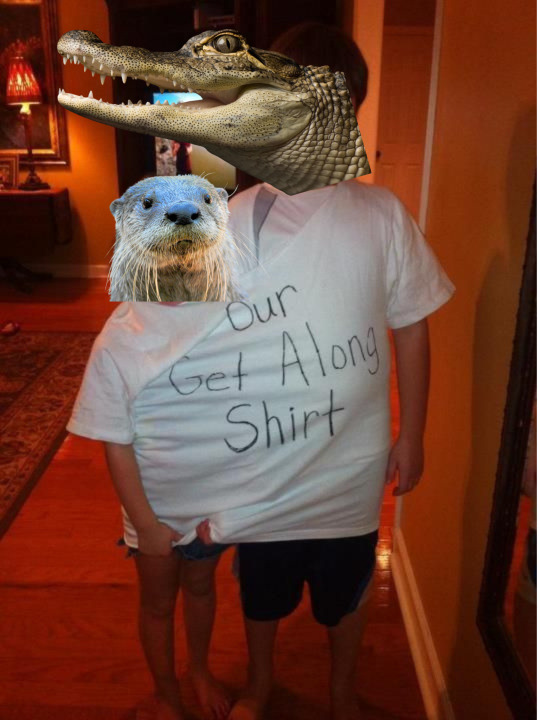
333 notes
·
View notes
Text
February 2025 Witch Guide
New Moon: February 27th
First Quarter: Feb 5th
Full moon: February 12th
Last Quarter: February 20th
Sabbats: Imbolc- February 1st
February Ice Moon
Also known as: Cleansing Moon, Deep Snow Moon(Mahican), Eagle Moon(Cree), Bear Moon(Ojibwe), Black Bear Moon(Tlingit), Bony Moon(Cherokee), First Flowers Moon(Catawba), Goose Moon(Haida), Groundhog Moon(Algonquin), Hungry Moon(Cherokee), Ice Moon, Midwinter Moon(Oneida), Raccoon Moon(Dakota), Sleet Moon(Comanche), Solmonath, Suckerfish Moon (Ojibwe) & Quickening Moon
Element: Fire
Zodiac: Aquarius & Pisces
Nature spirts: House Faeries
Deities: Aphrodite, Brigid, Demeter, Diana, Juno, Kuan-Yin, Mars & Persephone
Animals: Otter
Magical: Unicorn
Birds: Chickadee & Eagle
Trees: Cedar, laurel, myrtle & rowan
Herbs: Balm of Gilead, hyssop, myrrh, sage & spikenard
Flowers: Primrose
Scents: Heliotrope & wisteria
Stones: Amethyst, jasper, moonstone, obsidian, onyx, pearl, rose quartz, red zircon &topaz
Issues, intentions & powers: Astral travel, banishing, beginnings, empowerment, fertility & purification
Energy: Breaking bad habits, creative expressiveness, energy working to the surface, forgiveness, freedom, friendships, future plans, growth, healing, problem solving, purification, responsibility & science
The explanation behind February’s full Moon name is commonly known as the Snow Moon. This is due to the typically heavy snowfall that occurs in February. On average depending on location & climate conditions, February can be one of the snowiest months of the year according to data from the National Weather Service.
• In the 1760s, Captain Jonathan Carver, who had visited with the Naudowessie (Dakota), wrote that the name used for this period was the Snow Moon, “because more snow commonly falls during this month than any other in the winter.”
Imbolc
Known as: Brigid’s day, Feast of Torches, Feast of Waxing Light & Oimelc
Season: Winter
Element: Air
Symbols: Besoms, Brigid’s cross, candles, candle wheels, corn dolls, cauldrons, fire, ploughs, priapic wands & white flowers
Colors: Black, brown, green, lavender, orange, pink, red, white & yellow
Oils/Incense: Apricot, basil, bay, carnation, chamomile, cedar, cinnamon, dragon's blood, frankincense, heather, jasmine, myrrh, neroli, peppermint, red sandalwood, sage(green), styrax, vanilla, violet & wisteria
Animals: Badger, cow, deer, groundhog, sheep & snake
Birds: Lark, robin & swan
Stones: Amethyst, bloodstone, ×citrine, clear quartz, garnet, green tourmaline, hematite, iron, lodestone, onyx, red zircon, rose quartz, ruby, turquoise & yellow tourmaline
Mythical: Dragon
Food: Ale, breads, chives, cider, cornmeal, curry, dairy products, dried fruit, dried meats, eggs, garlic, grains, herbal teas, honey cakes, lamb, mead, muffins, nuts, onions, peppers, poppy seed cakes, pork, potatoes, poultry, pumpkin seeds, raisins, scones, spiced wine & sunflower seeds
Herbs/Plants: Angelica, ashleaf, balsam, basil, bay, benzoin, blackberry, celandine, clover, coltsfoot, coriander, dragon's blood, garlic, lemon, myrrh, reed, rosemary, sage, vervain, wheat, witch hazel & wormwood
Flowers: Chamomile, crocus, daffodil, heather, iris, rose hips, sunflower, tansy & violet
Trees: Blackthorn, cedar, rowan & sycamore
Goddesses: Anu, Aradia, Arianrhod, Artio, Athena, Branwen, Brigid, Danu, Februa, Gaia, Inanna, Juno, Selene, Selu, Sirona & Vesta
Gods: Aengus Mac Og, Bragi, Cupid, Dian Cecht, Dumuzi, Eros, Februus & Pax
Tarot cards: Death, The Empress & The Star
Spellwork: Air magick, cleansing, divination, fertility & new beginnings
Issues, Intentions & Powers: Awakening, animals, banishing, beginnings, change, fertility, healing, hope, illumination, inspiration, light, patience, pregnancy/childbirth, prophecy, prosperity, purification, transformation, well-being & youth
Activities:
•Make & light white candles
• Clean/decorate your altar & consecrate your altar tools
• Go on a walk in nature & look for signs of spring
• Make a Brigid’s Cross
• Have a feast with your family/friends
• Give thanks & leave offerings to the Earth
• Set intentions, reflect & look deeper into your goals for spring
• Start a bonfire
• Bless new projects
• Clear snow/ice from public walkways
• Gather & distribute warm clothes, hand warmers & blankets to those who need it
• Pepare plans for your upcoming garden
• Craft a priapic wand
• Spend time with children celebrating Imbolc by making crafts & or baking
• Make or buy new magical tools
• Practice divination & fire scrying
• Draw a cleansing ritual bath for yourself
• Meditate, reflect & say your farewells to winter
• Cleanse & clean your house to prepare for spring
• Create a Brídeóg: a doll of Brigid made of straw
• Make Bride’s bouquet satchets & exchange as symbols of good luck and fertility
• Set aside seasonal food & or drinks as an offering to Brigid to invite her in your home
• Find Imboloc prayers & devotionals that bid farewell to the winter months & honor the goddess Brigid
Imbolc is a Gaelic festival marking the beginning of spring. Most commonly it is held on January 31 – February 1, or halfway between the winter solstice & the spring equinox. The holiday is a festival of the hearth, home, a celebration of the lengthening days & the early signs of spring.
• It is suggested that Imbolc originally marked the onset of the arrival of fresh sheep milk after a period of food shortage & the beginning of preparations for the spring sowing.
The word “imbolc” means “in the belly” and refers to the pregnancy of ewes at this time of year. The term “oimelc” means ewe’s milk. Around this time of year, many herd animals give birth to their first offspring of the year or are heavily pregnant & as a result, they are producing milk.
Imbolc is mentioned in some of the earliest Irish literature and it is associated with important events in Irish mythology. It is believed that Imbolc was originally a pagan festival associated with the lambing season and the goddess Brigid. It's believed that Imbolc was Christianized as a festival of Saint Brigid, who herself is thought to also be a Christianization of the goddess.
• Joseph Vendryes and Christian-Joseph Guyonvarc'h suggested that it may have also been a purification festival, similar to the ancient Roman festival Lupercalia which took place at the same time of year.
Some scholars argue that the date of Imbolc was significant in Ireland since the Neolithic. A few passage tombs in Ireland are aligned with the sunrise around the times of Imbolc & Samhain.
Related festivals:
•Groundhog Day: February 2nd-
Is a tradition observed in the United States & Canada every year. It derives from the Pennsylvania Dutch superstition that if a groundhog emerges from its burrow on this day & sees its shadow, it will retreat to its den & winter will go on for six more weeks; if it does not see its shadow, spring will arrive early.
• While the tradition remains popular in the 21st century, studies have found no consistent association between a groundhog seeing its shadow & the subsequent arrival time of spring-like weather.
•St. Brigid’s Day: February 1st-
Celebrates the beginning of spring and the celebration of Lá Fhéile Bríde, St Brigid’s Day. The day has long symbolised hope, renewal and the feminine.
•Because Saint Brigid has been theorised as linked to the goddess Brigid, some associate the festival of Imbolc with the goddess.
St. Brigid is the patroness saint (or ‘mother saint’) of Ireland. She is patroness of many things, including poetry, learning, healing, protection, blacksmithing, livestock & dairy production. In her honour, a perpetual fire was kept burning at Kildare for centuries & a recent campaign successfully established her feast day as a national holiday in 2023.
The customs of St Brigid's Day did not begin to be recorded in detail until the early modern era. In recent centuries, its traditions have included weaving Brigid's crosses, hung over doors and windows to protect against fire, illness, and evil spirits. People also made a doll of Brigid (a Brídeóg), which was paraded around the community by girls, sometimes accompanied by 'strawboys'. Brigid was said to visit one's home on St Brigid's Eve. To receive her blessings, people would make a bed for Brigid, leave her food and drink, and set items of clothing outside for her to bless. Holy wells would be visited, a special meal would be had, and the day was traditionally linked with weather lore.
• Candlemas: February 2nd-
Is a Christian feast day on February 2nd commemorating the presentation of Jesus at the Temple. It is based upon the account of the presentation of Jesus in Luke 2:22-40.
•While it is customary for Christians in some countries to remove their Christmas decorations on Twelfth Night, those in other Christian countries historically remove them after Candlemas.
On Candlemas, many Christians also take their candles to their local church, where they are blessed and then used for the rest of the year. For Christians, these blessed candles serve as a symbol of Jesus Christ, who is referred to as the Light of the World.
•Setsubun: February 2nd-
Is the day before the beginning of spring in the old calendar in Japan. The name literally means 'seasonal division’, referring to the day just before the first day of spring.
Both Setsubun & Risshun are celebrated yearly as part of the Spring Festival (Haru matsuri ) in Japan. In its association with the Lunar New Year, Setsubun, though not the official New Year, was thought of as similar in its ritual & cultural associations of 'cleansing’ the previous year as the beginning of the new season of spring. Setsubun was accompanied by a number of rituals & traditions held at various levels to drive away the previous year’s bad fortunes & evil spirits for the year to come.
• The commonly practiced tradition of throwing of roasted soybeans (called "fukumame") in order to drive away evil spirits & bring good fortune into one's home is upheld by both places of worship & regular people. Then, as part of bringing luck in, it is customary to eat roasted soybeans, one for each year of one's life (kazoedoshi), plus one more for bringing good luck for the year.
Other celebrations:
• Lupercalia: February 13-15th-
In ancient Rome, this festival was conducted annually on February 13th through 15th under the superintendence of a corporation of priests called Luperci. The origins of the festival are obscure, although the likely derivation of its name from lupus (Latin: “wolf”) has variously suggested connection with an ancient deity who protected herds from wolves & with the legendary she-wolf who nursed Romulus & Remus. As a fertility rite, the festival is also associated with the god Faunus to purify the city, promoting health & fertility.
Each Lupercalia began with the sacrifice by the Luperci of goats & a dog, after which two of the Luperci were led to the altar, their foreheads were touched with a bloody knife & the blood was wiped off with wool dipped in milk; the ritual required that the two young men laugh. The sacrificial feast followed, after which the Luperci cut thongs from the skins of the sacrificial animals & ran in two bands around the Palatine hill, striking with the thongs at any woman who came near them. A blow from the thong was supposed to render a woman fertile.
In 494 CE the Christian church under Pope Gelasius I forbade participation in the festival. Tradition holds that he appropriated the form of the rite as the Feast of the Purification (Candlemas), celebrated on February 2, but it is likely that the Christian feast was established in the previous century. It has also been alternately suggested that Pope Gelasius I replaced Lupercalia with St. Valentine’s Day, celebrated on February 14th, but the origin of that holiday was likely much later.
Sources:
Farmersalmanac .com
Llewellyn's Complete Book of Correspondences by Sandra Kines
Wikipedia
Encyclopedia Britannica
A Witch's Book of Correspondences by Viktorija Briggs
Encyclopedia britannica
Llewellyn 2025 magical almanac Practical magic for everyday living
Llewellyn's Sabbat Essentials: Imbolc
Note:
This guide was written with Moon phases and dates corresponding to North America. These guides are supposed to be a generalized stepping off point to do your own research & help celebrate the way you feel called to.
•THIS IS CONDENSED INFORMATION AND SPECIFICS MAY NOT BE MENTIONED
This isn't based off what I do personally & I'm by no way suggesting people celebrate a certain way. It's stuff I've read & put together from books so people of different traditions & practices can get an idea of what to do for the sabbat, months or research for themselves.
Note that for Native American names, each Moon name was traditionally applied to the entire lunar month in which it occurred, the month starting either with the new Moon or full Moon. Also the name of the lunar month might vary each year or between bands or other groups within the same nation.
Some names listed here may reflect usage at once in history but may no longer be used by a designated group today. Many of the names listed here are English interpretations of the words used in Native American languages. They are only roughly aligned here with the months of the Gregorian calendar; you’ll notice that some names are repeated in multiple months.
The ones listed are the ones that were used in the books I used for correspondences & there are many more that are not mentioned.
#imbolc#wheel of the year#sabbat#February#February 2025#witch guide#snow moon#witchblr#wiccablr#paganblr#witch community#witches of tumblr#tumblr witches#witchcraft#grimoire#book of shadows#witch tips#beginner witch#baby witch#witchcore#spellbook#brigid#witch#traditional witchcraft#GreenWitchcrafts#occult#spiritual#witchy stuff#witchy things
104 notes
·
View notes
Text
For #WorldOtterDay + #Woodensday:

Top: wooden sea otter effigy feast bowl, Kwakiutl culture Bottom: wooden bowl with sea otter at one end & human at other, Haida culture
Both collected in 1897, now on display at Field Museum in Chicago.
#Indigenous Art#First Nations Art#Native American Art#Kwakiutl#Haida#bowl#woodwork#wood#effigy vessel#otter#sea otter#World Otter Day#marine mamals#Field Musem of Natural History#museum visit#animals in art#animal holiday
89 notes
·
View notes
Photo

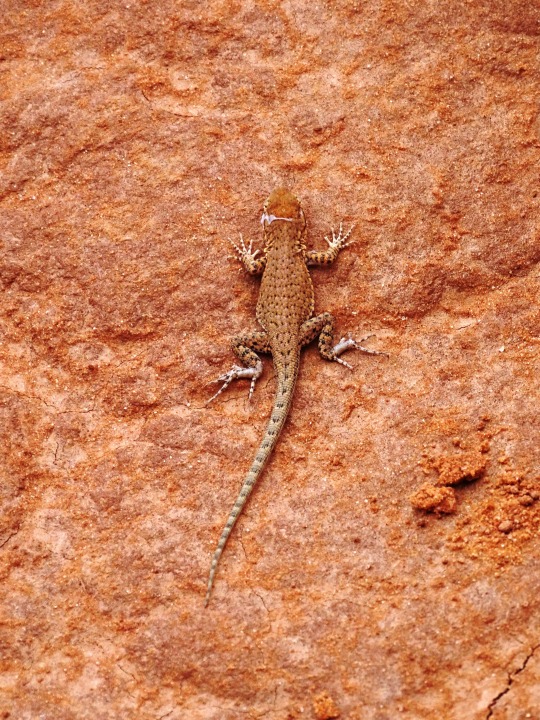
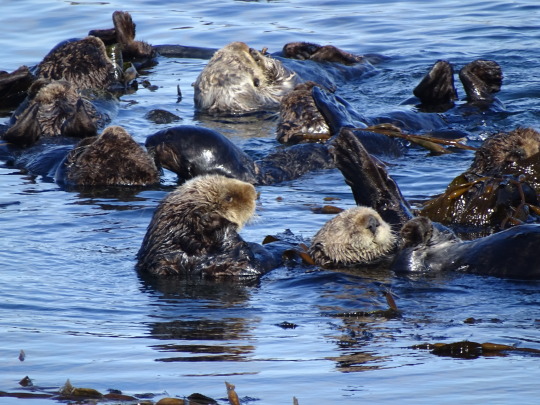
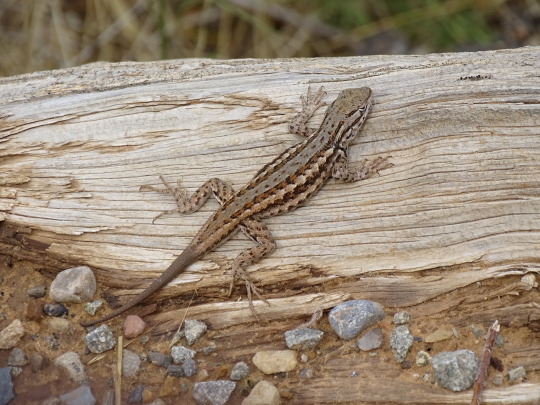
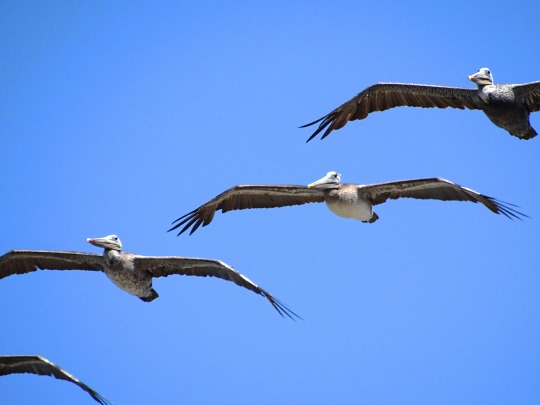
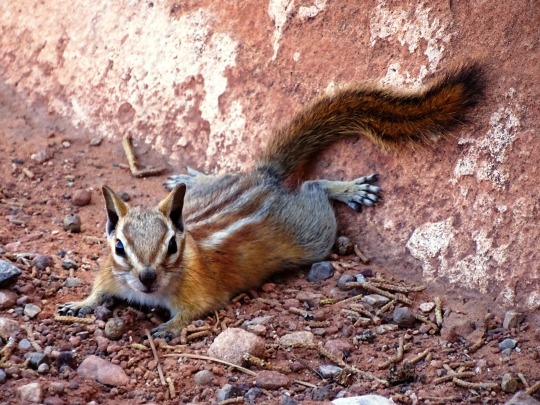
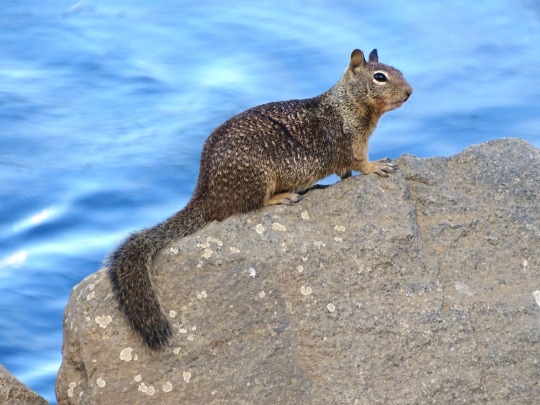
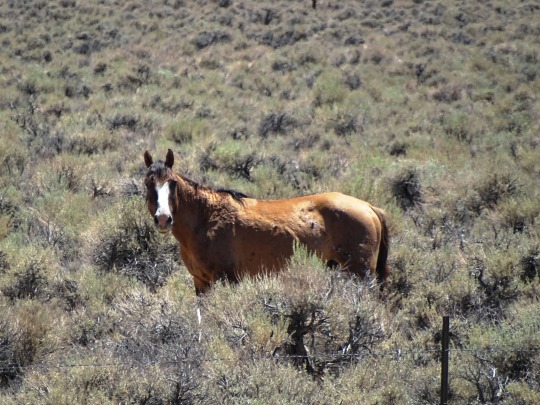

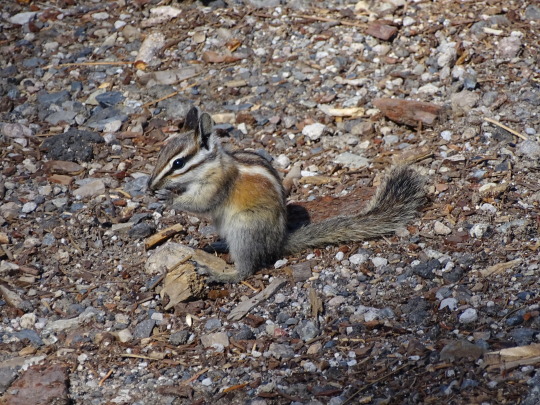
World Wildlife Day
The World is full of amazing creatures from every possible medium. From the birds of the air to the majestic whales of the sea, wildlife abounds in the most unusual and unexpected places. Wildlife benefits us in many ways and has since timed out of mind. World Wildlife Day is a day to remind us of our responsibilities to our world and the lifeforms we share it with.
Even though we might like to think so sometimes, humans aren’t the only living things on Earth. In fact, we’re far outnumbered by other living things, from animals and plants to fungi and bacteria. Wildlife isn’t just something that we passively observe; it’s part of our world, and something we need to care for. World Wildlife Day is your chance to celebrate all wildlife, from the smallest insect to blue whales. No matter what you love about wildlife, you can spend the day taking action to help protect it.
This day is all about raising awareness of wild flora and fauna across the world. Whether you love animals, you’re passionate about plants, or you’re concerned about climate change, it’s the day that you can use to educate yourself or others. You can celebrate the incredible biodiversity across the world and perhaps get out there to explore the huge range of flora and fauna the world has to offer. Celebrating World Wildlife Day is a must for anyone who loves our planet.
History of World Wildlife Day
On March 3rd, 1973 the United Nations General Assembly took a stand to protect Endangered Species throughout the world. Whether plant or animal, the importance of these species in every area of human life, from culinary to medical, could not be understated. At this time hundreds of endangered species were being threatened every year, and extinction was at a staggeringly high rate. CITES was put into place (Convention on International Trade in Endangered Species) to ensure that the world did not continue to hemorrhage species that would never be seen from again.
On December 20th, 2013 another step was taken to help spread awareness of the fragility of endangered species in the world. At its 68th session, the UN declared that each year World Wildlife Day would be dedicated to a new purpose and idea to help keep people abreast of the changing nature of our world, and the treasures we stand to lose from the animal and plant kingdom if we don’t take care.
Sometimes the day highlights an endangered animal or group of animals, while in other years, it has focused on a specific issue affecting the world of wildlife. Previous themes have included getting serious about wildlife crime and listening to young voices. World Wildlife Day is implemented by the CITES Secretariat, working together with relevant UN organizations. The day might not have been around for long compared to some others, but it’s already made a big impact. If you are passionate about the Earth and everything on it, celebrating is a must.
World Wildlife Day Timeline
1900 First wildlife conservation act is passed in the US
The Lacey Game and Wild Birds Preservation and Disposition Act is passed by Congress, which is the first legislation of its kind in the United States.
1948 International Union for Conservation of Nature begins
This is the first effort toward conservation that is supported by governments and societal organizations globally and its purpose is to encourage cooperation and the sharing of resources regarding conservation.
1961 World Wildlife Federation is established
A group of individuals who are passionate about protecting endangered species and places bands together to secure funding to this end.
1973 Convention on International Trade in Endangered Species
Negotiated in Washington DC, CITES is an international agreement between governments to protect the survival of various wild species by ensuring that trade does not threaten them. The signing takes place on March 3.
2013 First World Wildlife Day is celebrated
At its 68th session, the United Nations General Assembly (UNGA) declares March 3 as the day to raise awareness and and celebrate the wild animals all over the world.
How to Celebrate World Wildlife Day
You can celebrate World Wildlife Day on your own or with others, whether you just want to spend some time contemplating the majesty of nature or you want to spread the word about just how amazing the world’s wildlife is and how we can protect it.
The first thing that always comes to mind when we think about World Wildlife Day is heading out to our local zoo or botanical conservatory and reminding ourselves of the vast variety of life our world offers. If you have children, this can be one of the best ways to really introduce them to the wonders of the animal and plant kingdom. If you’re feeling particularly adventurous, an outdoor excursion with a book of local flora and fauna (That’s plants and animals) can help make that connection come even closer to home.
You could also spend the day spreading the word about the importance of our wildlife. If you love our planet, what better way to celebrate everything on it than to encourage other people to care about it too? You might create an event, get people to sponsor you or create some education materials. Choose a cause that matters to you, whether it is a local one or an international wildlife issue that you want to highlight.
Another way you can get involved is finding out what this year’s theme is by stopping by www.wildlifeday.org and finding ways to get involved. The website has a map of events that you can search to discover things to do near you, or you could add your own event to encourage others to get involved too. You can find a range of useful materials on the site too, including posters, logos, a social media kit, and a special action card that you can use to take photos. You can find suggestions for World Wildlife Day hashtags to use on social media or any materials that you create for your event too. Some of their suggestions for getting involved include running a competition, engaging with influencers, celebrities and politicians, and showing your appreciation for those who help to conserve wildlife every day.
There are few things as important as making sure that the world’s biosphere remains healthy, every time we lose a plant or animal, we have no way of knowing if a cure for a disease or some new medical breakthrough was lost with them. World Wildlife Day is your opportunity to do your part in preserving our world.
World Wildlife Day FAQs
Who started World Wildlife Day?
World Wildlife Day was started by the United Nations General Assembly which is the main policy-making sector of the assembly. Over the years it has become the most important annual event dedicated to the preservation of wildlife.
What is World Wildlife Day?
World Wildlife Day offers a simple opportunity to consider the animals and plants that humans share the planet with and to take action to help them in a variety of ways.
How to get involved with World Wildlife Day?
Taking part in World Wildlife day can be simple or more involved. The best ways to stay connected are to learn more, share the need with friends and family members, get to know threats to your local area, and host an awareness day at the office or at school.
Why do we celebrate World Wildlife Day?
The purpose of the celebration of World Wildlife Day is to raise awareness for the plight of and care for wild species that may be at risk and need to be protected.
When did World Wildlife Day start?
Although attention to wildlife has been active for more than 70 years, World Wildlife Day is a fairly modern celebration, officially started by the UN in 2013.
Source
#sea otter#pelican#lizard#California ground squirrel#Morro Bay#California#Monument Valley Navajo Tribal Park#Utah#Arizona#Pacific Ocean#Elephant Seals of San Simeon#Northern elephant seal#Sagebrush lizard#Mesa Verde National Park#Arches National Park#Hopi chipmunk#wild horse#Lodgepole chipmunk#World Wildlife Day#3 March#animal#flora#fauna#summer 2022#original photography#travel#vacation#USA#Colorado#California toad
6 notes
·
View notes
Text

stars come on
#dallas stars.#stars lb#please dont stress out jake so much. its national otter day#cmon team#poor mush too dsgjdgajs
4 notes
·
View notes